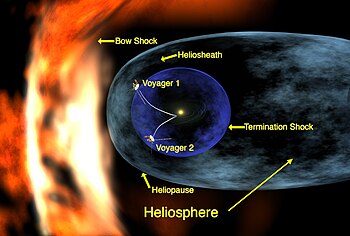
The solar wind is a stream of charged particles—a plasma—that are ejected from the upper atmosphere of the sun. It consists mostly of electrons and protons with energies of about 1 keV. These particles are able to escape the sun's gravity, in part because of the high temperature of the corona, but also because of high kinetic energy that particles gain through a process that is not well-understood at this time.
Many phenomena are directly related to the solar wind, including geomagnetic storms that can knock out power grids on Earth, the aurorae such as the Northern Lights, and the plasma tails of comets that always point away from the sun. While early models of the solar wind used primarily thermal energy to accelerate the material, by the 1960s it was clear that thermal acceleration alone cannot account for the high speed of solar wind. An additional unknown acceleration mechanism is required, and likely relates to magnetic fields in the solar atmosphere.
dig deeper
Many phenomena are directly related to the solar wind, including geomagnetic storms that can knock out power grids on Earth, the aurorae such as the Northern Lights, and the plasma tails of comets that always point away from the sun. While early models of the solar wind used primarily thermal energy to accelerate the material, by the 1960s it was clear that thermal acceleration alone cannot account for the high speed of solar wind. An additional unknown acceleration mechanism is required, and likely relates to magnetic fields in the solar atmosphere.
dig deeper
No comments:
Post a Comment